05:02
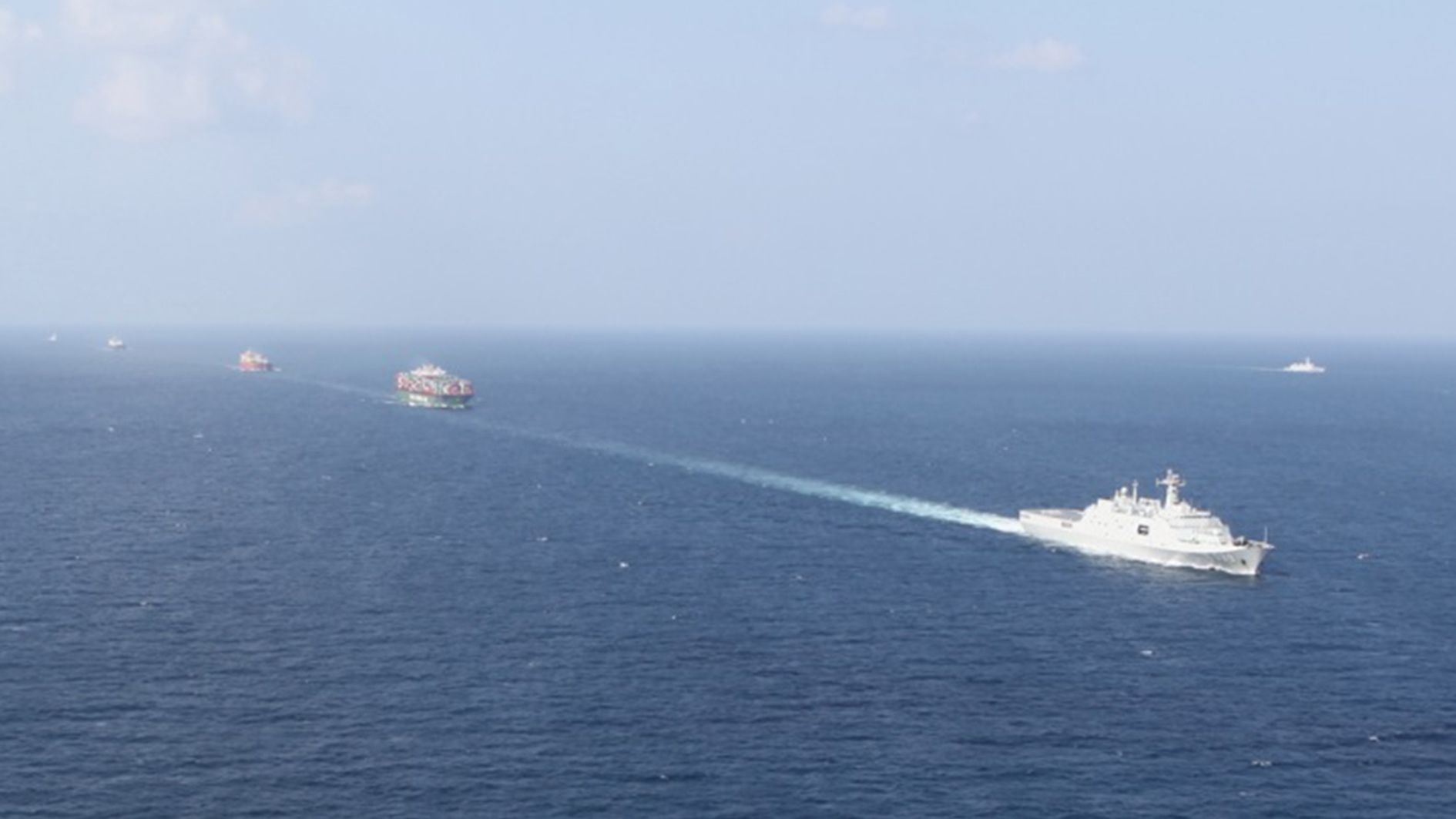
Audiences who have watched the 2018 Chinese box office hit "Operation Red Sea" would have been impressed by the Chinese navy's valor and resourcefulness.
Loosely based on the evacuation in March 2015 of over 200 foreign nationals and almost 600 Chinese citizens from Yemen, amid the outbreak of a civil war there, the film depicts the contour of China's naval escort taskforce in the Gulf of Aden and waters off Somalia.
People's Liberation Army (PLA) Navy Deputy Commander Qiu Yanpeng told a press conference Saturday that since 2008, the navy has sent 32 escort fleets, 69 helicopters and more than 27,000 officers and soldiers to escort over 6,600 vessels.
Background
The Chinese Navy first started its escort mission in the maritime area near the horn of Africa in December 2008.
Around that time, due to the worsened political crisis in Somalia, more and more Somalis were turning into armed pirates to gain illegal wealth by hijacking cargo ships passing by.
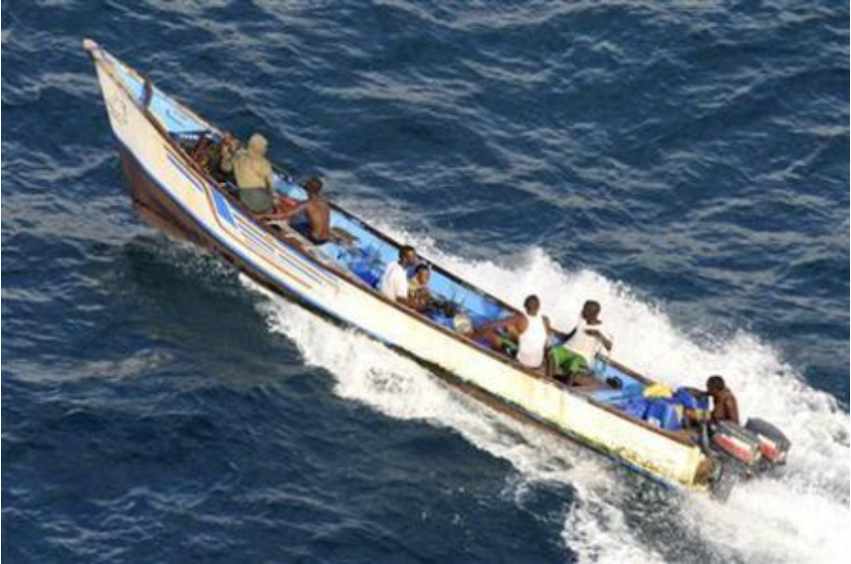
A suspected pirate skiff near Somalia's northern township of Bossaso, June 16, 2009. /Reuters Photo
A suspected pirate skiff near Somalia's northern township of Bossaso, June 16, 2009. /Reuters Photo
A Fox News report pointed out that 2008 marked the high time of piracy off the Somali coastline, with pirates making 111 attacks and seizing 42 vessels, mostly in the Gulf of Aden.
Chinese ships were not exempted from the danger. In 2008, the Chinese military said there were seven attacks on Chinese vessels in the area.
Given the severity of the situation, China decided to dispatch a naval escort taskforce to the northeastern African waters, in accordance with a UN resolution.
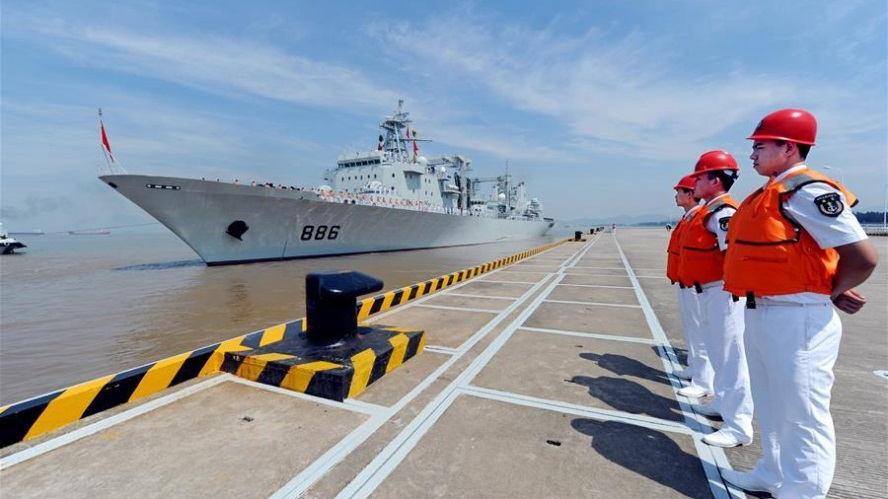
The 12th Chinese naval escort flotilla is ready to set sail at a port in Zhoushan, east China's Zhejiang Province, China, July 3, 2012. /Xinhua Photo
The 12th Chinese naval escort flotilla is ready to set sail at a port in Zhoushan, east China's Zhejiang Province, China, July 3, 2012. /Xinhua Photo
The first Chinese convoy fleet for Somalia, mainly composed of two guided missile destroyers and a comprehensive supply ship, set sail on December 26, 2008, from Sanya in south China's Hainan Province.
Ever since then, the Chinese Navy has maintained a foothold overseas, safeguarding national interests and upholding world stability and security.
Highlights
In the past decade or so, successive Chinese naval convoy taskforces have recorded many achievements, not only in fighting off pirates in the Gulf of Aden, but also in fulfilling various humanitarian obligations.
An article on chinamil.com.cn, a website sponsored by the Chinese PLA, quoted Senior Colonel Liang Fang, a PLA National Defense University professor, as saying that in 2017, only 4 percent of global pirate attacks occurred in the area where Chinese naval escorts were present – a significant decrease compared to the 48 percent seen in 2009.
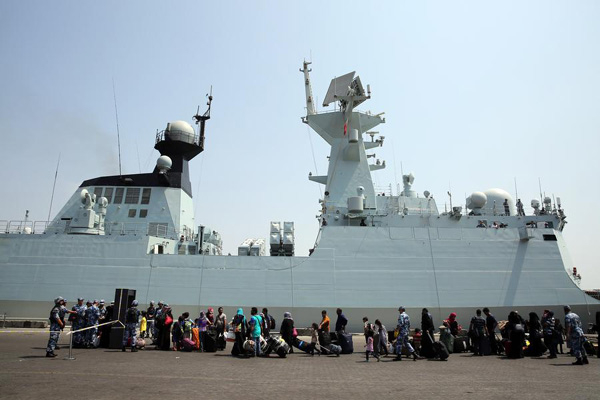
Foreign nationals from 10 countries wait to get on board of China's Linyi missile frigate to leave Yemen at Aden port, April 2, 2015. /Xinhua Photo
Foreign nationals from 10 countries wait to get on board of China's Linyi missile frigate to leave Yemen at Aden port, April 2, 2015. /Xinhua Photo
Apart from combating piracy, the PLA Navy has also carried out other missions.
The evacuation of Chinese nationals from war zones in Libya in 2011 and Yemen in 2015 have been considered a great boost to Chinese people's confidence in the PLA's ability to protect overseas nationals.
In 2014, the Chinese Navy joined a multinational escort of the ships delivering Syria's chemical weapons for destruction. During the same year, it also participated in search and rescue operations for the missing Malaysia Airlines Flight 370 and shipped 960 tons of fresh water to the Maldives when the country was suffering from a water crisis.
According to China's state television CCTV, the Chinese naval escort taskforce is gaining more and more trust from both Chinese and foreign vessels. In the past ten years, vessels from countries like Singapore, the Philippines and Cyprus have specifically applied to be escorted by the Chinese convoy fleet.
Cross-nation friendship
As Global Times reported, more than 40 escort vessels from some 20 countries gather in the Gulf of Aden. Instead of adopting a closed-minded attitude, the Chinese navy has chosen to communicate with navies of other countries and let them know more about the Chinese vessels.
Indeed, joint drills and training between China and other countries, reciprocal onboard visits and trips to foreign countries during and after escort missions have been continuously been carried out over the past decade.
Statistics provided by China's Ministry of National Defense in December 2018 reveal that between 2008 and 2018, China's naval convoy fleets carried out friendly visits to 63 countries in six continents.
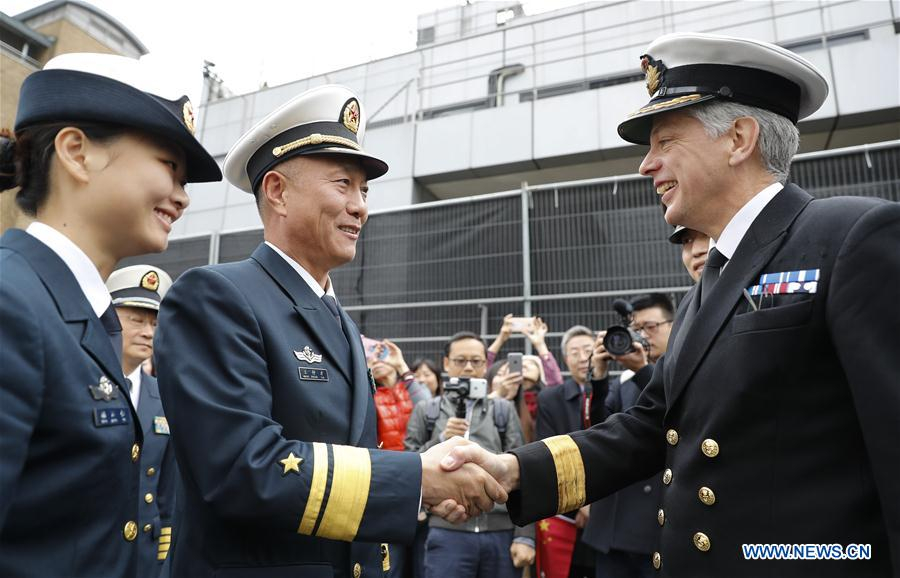
China's 26th naval escort fleet commander Wang Zhongcai (C) shakes hands with David Elford, British Naval Regional Commander for Eastern England, during a farewell ceremony at West India Docks in east London's Canary Wharf, Britain, October 7, 2017. /Xinhua Photo
China's 26th naval escort fleet commander Wang Zhongcai (C) shakes hands with David Elford, British Naval Regional Commander for Eastern England, during a farewell ceremony at West India Docks in east London's Canary Wharf, Britain, October 7, 2017. /Xinhua Photo
The frequent exchange has not only broadened the horizon of Chinese soldiers and officers, but also improved the transparency of the Chinese military, which is conducive to the enhancement of mil-to-mil trust between China and foreign countries.
While the Chinese PLA is marking the 70th anniversary of its establishment in late April this year, the contribution made by the Chinese Navy's escort fleets and military personnel since 2008 has made the birthday celebration even more meaningful.






